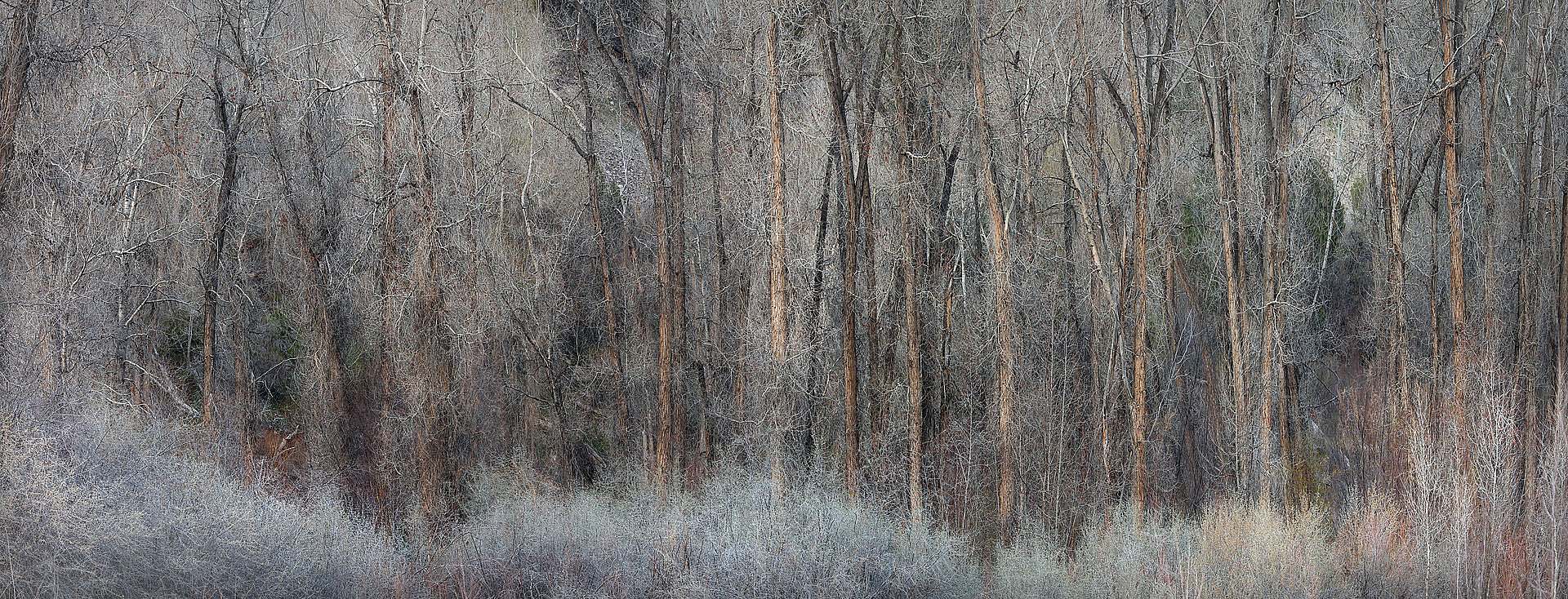Along the banks of a wild and romantic mountain stream in the Colorado Rocky Mountains, slender cottonwood trees tower skywards. The trees grow close together, their branches intertwined like a delicate web, resembling a forest painting bare of leaves in late spring.
The light-colored, almost whitish branches of the Fremont cottonwoods (Populus fremontii) and narrow-leaved cottonwoods (Populus angustifolia) remain bare in the cool higher mountain regions until late April, contrasting with the brown trunks and the light-absorbing, damp forest floor. Cottonwood poplars prefer to grow as solitary trees, taking on fascinatingly bizarre growth forms. However, they also prefer moist locations along rivers and streams. In mountainous regions along narrow canyons and meandering streams, however, they often lack the space for solitary growth. Then they arrange themselves densely in groves along the water-bearing river courses and grow straight and slender into the height.
Their leafless branches appear ghostly, as if they themselves were emitting light, intensifying the gloomy, diffuse interplay of light on the forest floor. The humid microclimate promotes dense intertwining branches, which stretch from tree to tree like a delicate web. Small islands of light appear between the trunks, creating a mysterious and surreal atmosphere in the forest.
Here, where water, light, and shadow intertwine, the Ghost Groves emerge, the silent spirit guardians of the Colorado Rocky Mountains, reflecting the cycle of life, transience, and renewal in nature. Each branch carries the memory of past leaves, each twig the vision of the approaching summer. A place that demands awareness and reveals its beauty only to the patient observer. This mystical light lasted only for a fleeting moment, as deep twilight gave way to the darkness of night. Beauty so often lies in simplicity, in the quiet power and presence of nature.

